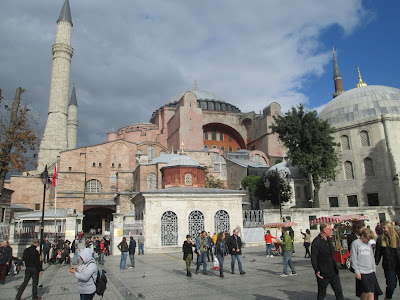The diocese of Lincoln would like our parish to be paying
into the diocese’s Common Fund by 2018 at about 225% the rate it managed in
2014; an increase of about £5.80 each week from each ‘usual Sunday attender’. Notwithstanding our low level of contribution
when compared with what similar parishes in most other dioceses are managing, I’m
not sure that is a realistic expectation, to put the point no more strongly.
There has been careful work to agree a new formula for
Parish Share. At earlier stages in ‘road
testing’ this, I had heard it recognised that the formula (in common with any
possible formula) would produce unrealistic or even rogue results for some 10%
of parishes, and the refreshing suggestion that individual negotiations would
take place with those parishes.
But in the end, the new calculation was simply presented to our
parish with the suggestion that we could always appeal. I’m sorry those involved didn’t recognise how
different the dynamic is between ‘this looks odd to us, so let us talk about it’
and ‘here it is, but you could appeal’.
There is a suggestion that the diocese could offer ‘support’
to those parishes which are facing an up-hill struggle responding to the new levels
of Parish Share assessement, and it is certainly true that we ought to reassess
our approach to what has long been called our financial ‘stewardship’, but I am
wary having heard one of the diocesan ‘Discipleship Development Advisers’ more than
once commend a 10% tithe of income directed exclusively to the financing of the
church.
Talking it all through, I know that my wariness dates back
to being a member of the General Synod in about 1999/2000 when a ‘stewardship’
report called First to the Lord was debated.
The title was drawn from 2 Corinthians 8.5 where Paul was commending (and
further encouraging) the spontaneous generosity of the Macedonian churches towards
the extreme needs of Christians in Jerusalem.
My real problem was that this text isn’t actually about
financing the institutional needs of the church at all, and eliding our giving
of ourselves and our money ‘first to the Lord’ with meeting the needs of the
church seemed to be a sleight of hand at the best. I seem to remember something like ‘If we
loved God as much as we do our grandchildren, the church would have no problem’
was one slightly creepy way this was expressed.
I remember that the problem was all the more acute because
at the previous meeting we had debated a report Called to New Life which had
explicitly warned against allowing only things done for the church to constitute
our understanding of Christian discipleship – and that almost nobody I spoke to
at the Synod recognised that there might be a contradiction here.
I need to practice and provoke sacrificial generosity much
more than I do – and exploring a 10% tithe of income might well be the best way
to reference this financially – but I remain convinced that this generosity is quite
as much about those in extreme need and those closest to us as it is about the
church - and that identifying giving to the last of these as being ‘first to
the Lord’ or the appropriate destination for our whole tithe is a sect-like
manipulation.
But at least I recognise what in my past makes my reaction so
extreme before I begin to think how we might at least begin to see how we might
respond better to the need of the diocese’s (our own) Common Fund.
























